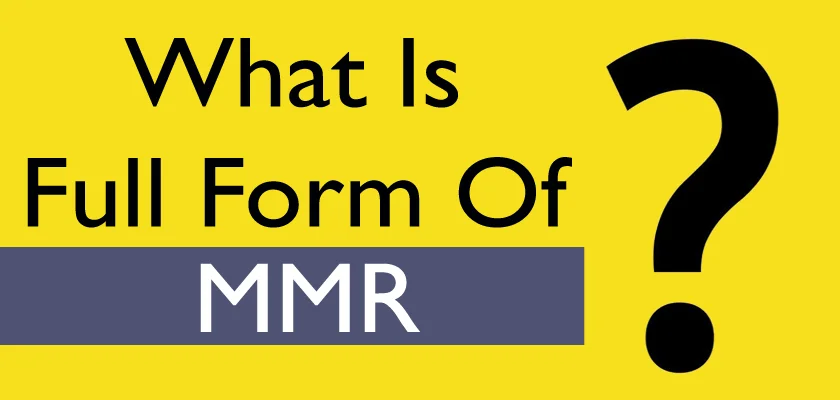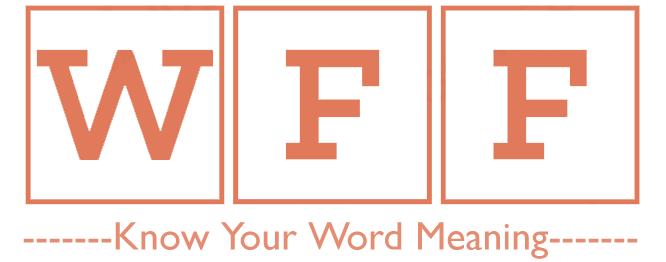Do you know what is the MMR Full Form? The full form of MMR is Measles, Mumps, and Rubella. Although many people are still unaware of what the MMR acronym stands for and what the vaccine does, the MMR vaccine has become an important component of contemporary health care. Measles, mumps and rubella are the diseases against which the MMR vaccine protects. We will learn about the meaning of MMR as well as its benefits and administration in this article.
Table of Contents
What is the MMR Full Form?
MMR Full Form- Measles, Mumps, and Rubella
What is MMR?
MMR stands for Measles, Mumps, and Rubella. Measles, mumps, and rubella are a group of contagious illnesses that, if untreated, can have serious health consequences. The MMR vaccine aids in the prevention of these illnesses. One of the vaccines that healthcare professionals around the world most strongly advise getting is the MMR shot. Children and young adults who are most susceptible to these infections need it more than anyone else.
Why is understanding MMR essential?
Understanding MMR is vital in promoting public health and preventing the spread of infectious diseases. The MMR vaccine is a safe and effective way to prevent measles, mumps, and rubella. Vaccination protects not only the individual but also the community by creating herd immunity, making it challenging for the infection to spread. Therefore, having a comprehensive understanding of MMR, its history, and its importance is crucial for everyone.
Understanding the MMR Symptoms-
| Disease | Description | Transmission | Initial Symptoms | Potential Complications |
| Measles | Respiratory tract viral illness, contagious | Through contact with respiratory secretions | Fever, dry cough, rash, runny nose, red/watery eyes | Pneumonia, brain damage, death |
| Mumps | Viral infection, contagious through saliva and contact | Through saliva, nasal secretions or near contact | Swelling of salivary glands, fever, headache, muscle aches | Meningitis, encephalitis |
| Rubella | Contagious illness caused by the rubella virus | Through contact with respiratory secretions | Rash, fever, sore throat, swollen lymph nodes | Birth defects if contracted during pregnancy |
Understanding the History of MMR
The Discovery of MMR
The relationship between measles, mumps, and rubella was first established in the 18th century when they were identified as separate diseases. Scientists realized that these three diseases had similar symptoms, including fever and rash, and they could occur simultaneously.
The Early use of MMR
In 1963, John Enders and his team developed the Edmonston-B strain of measles virus into a vaccine, which was licensed in the US. Later, in 1968, Maurice Hilleman and colleagues created an even more effective measles vaccine, the Edmonston-Enders (formerly known as “Moraten”) strain, which has been the primary measles vaccine used in the US since then. Typically, the measles vaccine is combined with mumps and rubella (MMR), or with mumps, rubella, and varicella (MMRV). For more information on the measles vaccine, please refer to additional resources.
MMR Vaccine Doses Details
The MMR vaccine is now frequently advised by medical professionals all over the world. It is advised that all infants receive the first dose between the ages of 12 and 15 months, followed by a second dose between the ages of 4 and 6 years. Adults who have not received the MMR vaccine or who have had the disease in the past are also advised to receive it, according to healthcare professionals.
Importance of MMR in Healthcare
The Benefits of MMR Vaccination
The benefits of MMR vaccination cannot be overstated. Vaccination against measles, mumps and rubella is the safest and most effective way to prevent these diseases. The MMR vaccine is up to 97% effective at preventing measles, mumps, and rubella infections.
MMR Vaccination Scheduling and Coverage
MMR vaccination is recommended for all children, with the first dose given between 12 and 15 months of age, and the second dose at 4–6 years of age. The World Health Organization has set a target of 95% coverage for MMR vaccination.
MMR and Herd Immunity
MMR vaccination not only protects the individual but also provides herd immunity. Herd immunity occurs when enough people in a community are vaccinated, making it challenging for the infection to spread. This means that even persons who have not been vaccinated are protected against the disease. Therefore, MMR vaccination is essential to reduce the spread of infectious diseases and promote public health.
How is MMR Administered?
The MMR vaccination is administered through an injection into the muscle. Typically, the injection is given into the upper arm. The vaccine is a live attenuated vaccine, meaning it contains weakened versions of the viruses that cause measles, mumps, and rubella. Once administered, the vaccine stimulates the body’s immune system to produce antibodies that protect against these diseases.
MMR Vaccination Common Side Effects
Common side effects of MMR Vaccinations include- headache, mild rash, fever, sore arm, pain and stiffness in joints, dizziness, nausea, and vomiting.

Other MMR Full Forms List:-
| Term | Full Form | Category |
| MMR | Measles, Mumps, and Rubella | Medical |
| MMR | Austin (tx) | Airport Code |
| MMR | Modified Modified Read | Computer and Networking |
| MMR | Myanmar | Country ISO Code |
| MMR | MANMAD JN | Indian Railway Station |
| MMR | Muti-Mode Radar | Military and Defence |
| MMR | Massachusetts Military Reservation | Military and Defence |
| MMR | Money Manager Review | Stock Exchange |
| MMR | Mantaray Motorsport Racing | Sports |
| MMR | Mobile Mapping and Routing | Telecommunication |
FAQs- What is the MMR Full Form?
What is the MMR Full Form?
The MMR Full Form stands for “Measles, Mumps, and Rubella.”
What is the MMR vaccine?
The MMR vaccine is a vaccine that protects against measles, mumps, and rubella.
When is the MMR vaccine given?
The first dose of the MMR vaccine is usually given to children around the age of 1 year, and the second dose is given at 4-5 years old.
What are the common side effects of the MMR vaccine?
The common side effects of the MMR vaccine include headache, mild rash, fever, sore arm, pain and stiffness in joints, dizziness, nausea, and vomiting.
Is the MMR vaccine safe?
Yes, the MMR vaccine is considered to be safe and is recommended by healthcare professionals worldwide to protect against the diseases it covers.
What Is the MMR Full Form in Biology Class 12
The full form of MMR is Measles, Mumps and Rubella.
What Is the MMR Full Form in tax?
The Maximum Marginal Rate (MMR) is defined as the rate of income tax, which includes surcharge as well as health and education cess, applied to the highest income slab applicable to an individual, Association of Persons (AOP), or Body of Individuals (BOI).
What Is the MMR Full Form in Pregnancy?
The maternal mortality ratio, calculated with the denominator being the number of live births, signifies the risk a woman faces once she becomes pregnant.
Thanks for reading What is the MMR Full Form? Bookmark our website Whatisfullform.com to know or read our collection of full forms.


